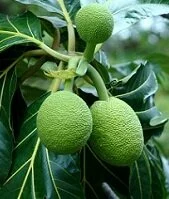Wildlife

"Flying foxes"
The number of native plants and animals in Tonga are severely limited since the country is an island nation. The native land life is almost non-existent and the native plant life was also very limited. The migrating birds and sea life had the most significant presence in creating today's plant and animal life. Much of what is found on the islands today was introduced in pre-historic times by the migrating people, birds, winds, and ocean currents.
As an island nation that rose from the sea floor there were no native mammals in Tonga, although a few bat species arrived thousands of years ago. The most famous of these is the "flying fox," a large bat found throughout the country. Other than this, no land mammals existed on Tonga until the arrival of the earliest people, who likely came from the region of New Guinea, and may have brought with them rats, dogs, and pigs, three animals that eventually made their way to Tonga.
The seas are also home to mammals as dolphins and whales call the surrounding waters home. These waters are also filled with thousands of fish, shellfish, and other forms of sea life. This sea life includes surgeonfish, clownfish, sailfish, puffer fish, butterfly fish, grouper, barracuda, tuna, mackerel, marlin, mahi-mahi, shrimp, krill, crab, seahorses, manta rays, sharks, jellyfish, starfish, sea urchins, and coral among many others.

Breadfruit tree
These sea animals and the islands have also attracted numerous birds, many of whom feed off the animals in the sea. The bird life in Tonga includes doves, owls, passerines, scrub fowls, heron, terns, pigeons, and cuckoos among others.
The reptilian and amphibious life is fairly limited for the same reasons the mammalian life is limited. The most common of these animals are those adapted to the water and swimming as sea turtles can be found in the nearby waters. Land species have again made their way to the islands in numerous methods and today lizards are among the most common of these animals.
The insect and other small animal life is fairly diverse as many insects can fly or float and have made their way to Tonga. These animals include butterflies, moths, bees, ants, flies, snails, spiders, and worms among others.
The plant life is also limited due to the geography of Tonga as an island. It is doubtful any significant plants originated in the country itself other than a limited number of local grasses and shrubs. However the winds and water currents have taken seeds to the islands and in other cases birds and people have transported seeds to the islands. Because of this many of the more commonly known plants on the islands today are native to the distant islands of New Guinea and those further west. Plants from these islands, that now thrive in the country, include coconuts, taro, breadfruit, bananas, yams, arrowroot, lemons, and sugarcane among others.
There is also a presence of other trees and plants, including orchids, hibiscus, eucalyptus, frangipani, ferns, mosses, mahogany trees, mangrove trees, and pandanus trees.